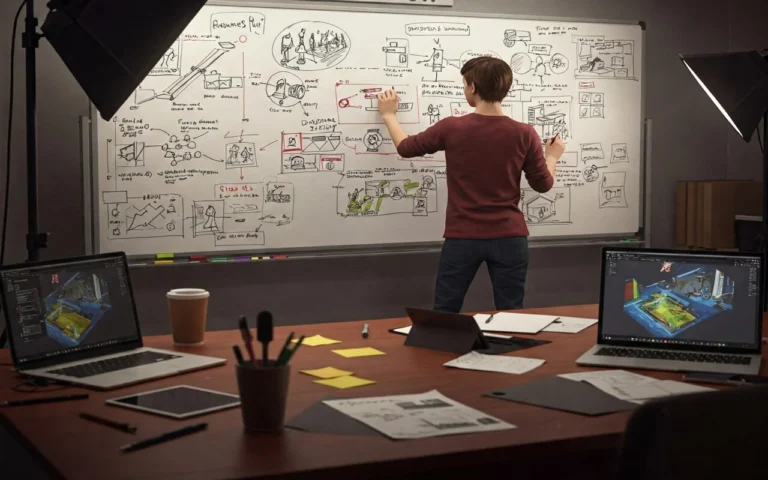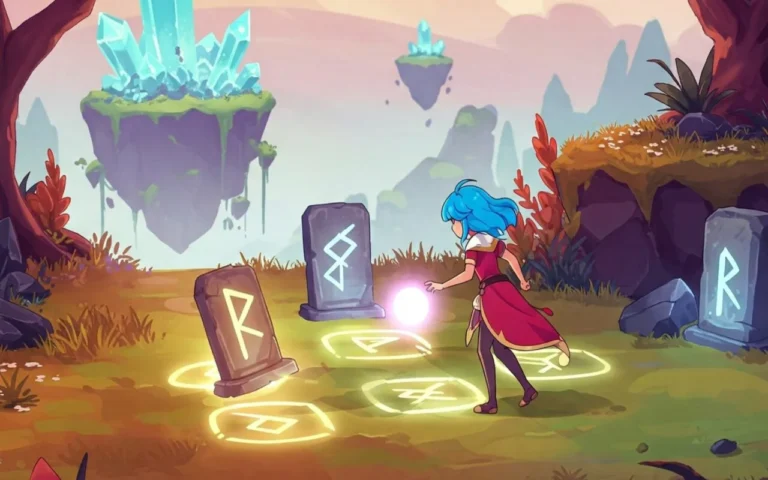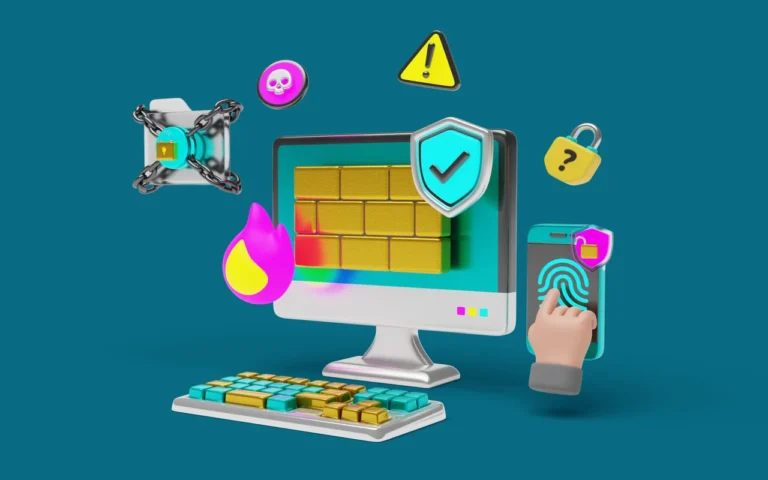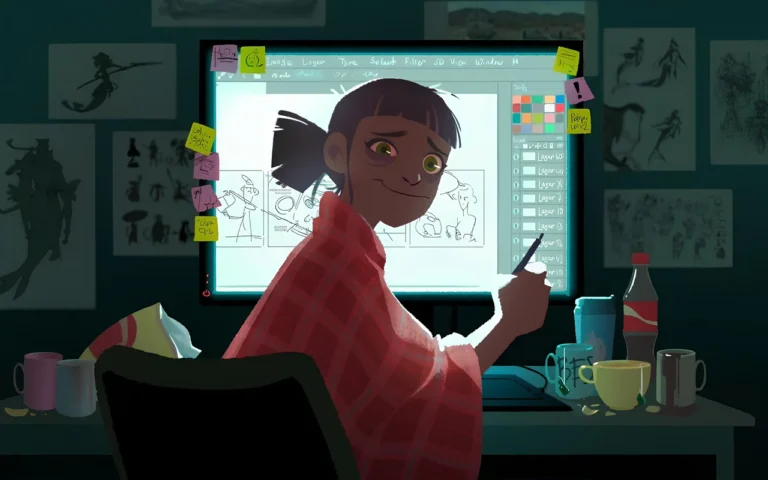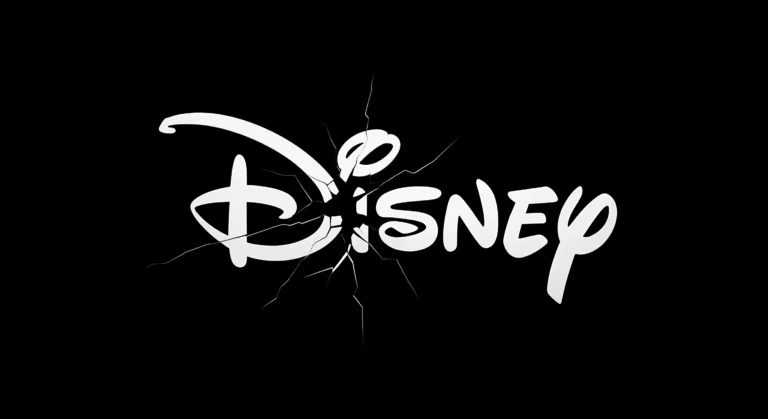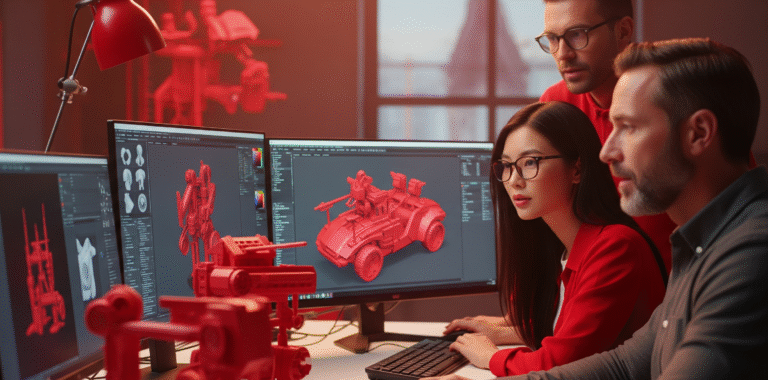Have you ever noticed the seamless blend of reality and fantasy in a blockbuster movie? Or have you ever been immersed in a video game’s breathtaking world, forgetting how it’s all virtual?
The secret magic behind these experiences often lies in computer-generated imagery (CGI) videos, which are visual scenes crafted entirely by computers!
Computer-generated imagery (CGI) has revolutionized how we tell stories, design products, and even conduct educational programs. This cutting-edge method merges artistic vision with technological precision, delivering stunning pictures, from the silver screen to virtual reality headsets. CGI videos are everywhere, constantly reshaping our perception of what’s possible!
In this article, we will explore the world of CGI videos, discussing their creation process, diverse applications, various benefits, and the challenges that come with them.
Whether you’re a filmmaker, a tech enthusiast, or simply curious about the digital work behind your favorite movies, this guide will help you navigate the artistry and science of CGI.

Need Animation Services?
Visit our Animation Service page to see how we can help bring your ideas to life!
Understanding CGI: What is Computer-Generated Imagery?
Computer-generated imagery (CGI) is the art of creating visuals, such as still images or animated sequences, using specialized computer software.
Even though CGI is often linked to 3D modeling and animation, it also includes using 2D graphics and visual effects (VFX) that enhance live-action footage.
CGI is like a playground where creativity meets computation, allowing artists to capture anything from their imagination, whether a roaring dinosaur or a futuristic cityscape!
The roots of CGI trace back to the 1960s, when pioneers like Ivan Sutherland laid the groundwork with early computer graphics experiments. However, it was the 1990s that marked CGI’s breakthrough in mainstream entertainment.
Films like Jurassic Park (1993) stunned audiences with lifelike dinosaurs, while Toy Story (1995) made history as the first fully CGI-animated feature film.
Notably, these achievements were possible because of the advancements in tools like Autodesk Maya, Blender, and Adobe After Effects, which have since democratized CGI, making it accessible to creators worldwide.
What makes CGI unique? Unlike traditional filmmaking or hand-drawn animation, CGI offers infinite possibilities. A director can craft an alien planet without leaving the studio, or an architect can visualize a building before a single brick is laid.
Today, CGI extends beyond entertainment into fields like medicine, education, and digital marketing, proving its versatility and effectiveness.
How Is The CGI Video Creation Process?
Producing a CGI video is a complex, multi-step process that blends creativity with technical expertise.
Known as the video production pipeline, this process unfolds in six key stages: Pre-Production, Modeling, Texturing and Materials, Rigging and Animation, Lighting and Rendering, and Post-Production.
Each of these steps is a building block that can help you transform an idea into a polished visual narrative.
1. Pre-Production:
Our journey begins with pre-production: the planning phase, where the vision is born.
- This step starts with conceptualization, or turning an inspired notion into a silhouette of a solid story.
Whether it’s a film, game, or advertisement, team members collaborate to define the project’s scope, audience, and message. - The next step in this phase is storyboarding: visually mapping the sequence!
Storyboarding means artists sketch scenes in panels to create a comic-strip-like guide that aligns with the team’s vision. This step might also involve concept art (detailed designs of characters, environments, or objects) to establish the aesthetic. - For dialogue-heavy projects, voice actors record lines, and technical details, such as software choices (e.g., Cinema 4D or Houdini) are finalized.
Pre-production is the blueprint of your creation that helps you track every subsequent step of the project.
2. Modeling:
With the plan set in phase 1, 3D modeling builds the digital foundation of your work.
Using 3D modeling software, artists craft objects, characters, and environments from basic shapes, such as polygons (tiny triangles forming surfaces) or NURBS (curves for smooth, organic forms). For example, a dragon’s scales might need thousands of polygons for intricate detail, while a distant mountain needs fewer to convey the proper expression.
This stage requires precision and foresight to build models that balance realism with efficiency.
Overly complex designs can slow down later processes like rendering, or cause complications in financial matters.
3. Texturing and Materials:
A model without texture is a blank slate; where texturing and materials add color, detail, and realism to it.
- Texturing wraps 2D images, such as skin patterns or rust, around the 3D model. It is often hand-painted or sourced from real-life photographs.
- Materials define how surfaces react to light: a glossy car hood reflects sharply, while a wool sweater scatters light softly.
Artists use shaders (small tools within software) to fine-tune such properties. Advanced techniques, like procedural texturing, generate patterns automatically, ideal for sprawling landscapes or intricate fabrics. This step allows you to transform gray models into vivid, believable entities.
4. Rigging and Animation:
In this stage, we bring CGI to life through movement with Rigging and Animation!
- Rigging creates a digital skeleton inside the model, with joints and controls for manipulation. A character’s rig might include bones for limbs and facial muscles, allowing natural expressions.
- Animation then animates the rig. Artists might use keyframing, setting poses at specific moments, or motion capture to record real actors’ movements to map onto the model. Animation principles, like timing, exaggeration, and follow-through, ensure fluidity.
This stage turns static shapes into dynamic stories.
5. Lighting and Rendering:
Lighting and Rendering give the scene depth and realism.
- Lighting mimics cinematography, with virtual lights (directional, ambient, or soft) casting shadows and highlights. A sunset might glow warmly, while a dungeon flickers with torchlight, all designed for setting the proper mood.
- Rendering converts the 3D scene into a 2D video. This computationally heavy process calculates light interactions and produces the final look. Ray tracing delivers photorealistic reflections, which are ideal for films, while rasterization suits real-time needs like games. Rendering can take hours per frame for high-quality CGI videos, so they often rely on render farms (networks of computers) to speed things up.
6. Post-Production:
The final touches come in post-production. Rendered frames are edited into a cohesive video, with cuts and transitions refining the pace.
Visual effects (VFX), such as smoke or explosions, are added, often blending CGI with live footage. Sound design layers in music, dialogue, and effects, while color grading adjusts tones for mood or consistency.
This stage polishes the raw output into a finished product, ready to captivate audiences. This phase is the glue that unifies and polishes every element into a seamless CGI video.
What Are the Applications of CGI Videos?
CGI is vastly appliable and has reached various industries that each can leverage its power uniquely.
Let’s explore some of these applications.
1. Film and Animation:
In film and animation, CGI bears the load of storytelling.
An animation studio like Pixar crafts entire imaginative worlds, as seen in Inside Out (2015), where emotions become vibrant characters! The film’s abstract mindscapes significantly highlight CGI’s ability to visualize the intangible.
Live-action films use CGI for spectacle and subtlety. The Lion King (2019) remade Disney’s classic with photorealistic animals, a feat requiring 1,600 artists and 100 million render hours!
Such examples highlight CGI’s role in both creating and enhancing cinematic universes.
Here is an example of Pixune Studios CGI and VFX services for a movie.
2. Gaming:
Game development relies on CGI for cinematics and real-time visuals.
Final Fantasy VII Remake (2020) uses pre-rendered CGI for emotional cutscenes, while its gameplay employs real-time rendering, using Unreal Engine. This duality immerses players, with cinematics boasting over 40 minutes of high-quality footage.
Real-time advancements, like NVIDIA’s RTX technology, bring ray-traced lighting to titles like Minecraft RTX, transforming blocky worlds with realistic shadows. As gaming consoles like the PlayStation 5 push hardware limits, CGI in gaming continues to evolve, merging cinematic quality with interactivity.
3. Advertising and Marketing:
In the marketing and advertising aspect, businesses are now deploying CGI for stunning visuals on a budget. Various companies utilize CGI to showcase their new campaigns and products without requiring physical prototypes. This approach cuts production costs and enables endless creativity.
4. Education:
For creating educational programs, CGI helps simplify complex and abstract subjects for a more comprehensive look.
For example, medical schools use tools like zSpace, where students dissect virtual organs in 3D. Moreover, CGI has helped historical recreations thrive. The Smithsonian’s CGI model of ancient Egypt’s Giza Plateau lets students “walk” through pyramids, offering a visceral connection to the past.
These tools bridge gaps between theory and experience, pushing the boundaries of learning and development more than ever.
5. Virtual Reality (VR):
As one of our hottest daily topics, Virtual Reality or VR, also utilizes CGI to create such immersive universes for maximum user interaction.
Games like Beat Saber blend rhythmic action with vivid environments, while training programs (like Walmart’s VR customer service simulations) prepare employees for their future jobs in virtual stores!
On a more mental-health related note, therapeutic VR uses CGI too! Oxford VR’s phobia treatments place patients in controlled digital scenarios and have shown great potential for reducing fear responses.
As headsets and hardware delicacy improve, CGI-driven VR will continuously expand into more corners of our everyday life.
Read More: Creating Art for Virtual Reality (VR) Games
6. Augmented Reality (AR):
Another trendy matter in today’s tech world is augmented reality. AR utilizes CGI to overlay into reality!
Snapchat’s filters—adding bunny ears or glowing effects—rely on real-time CGI, which are entertaining millions daily!
Sephora’s Virtual Artist app lets users try makeup digitally in retail, boosting sales significantly due to the accuracy and applicability of this technique..
Moreover, AR’s scope of application extends to some professional careers as well. For example, Boeing uses AR headsets to overlay CGI wiring diagrams onto planes, cutting assembly errors by 25%.
The Benefits of CGI Videos!
But why is CGI becoming more and more predominant? Well, its advantages are a bit too compelling:
- Unlimited Creativity: CGI builds impossible worlds—like the floating islands of Avatar—free from physical constraints, setting the sky as the limit of our imagination!
- Cost Savings: With digital sets replacing costly build, CGI is a cost-effective solution for many purposes in different industries.
For example, Game of Thrones saved millions using CGI castles instead of real ones! - Safety: Explosions or stunts, like those in Mission: Impossible – Fallout, are simulated risk-free!
- Reusability: As Marvel does with Iron Man‘s suits, assets like a spaceship can be tweaked for sequels.
- Precision: With CGI, you can control every frame, which is an excellent advantage for ads or architectural previews needing perfection.
The Upcoming Challenges in CGI Video Production!
As with any other matter, CGI’s brilliance comes with its own set of obstacles:
- Technical Complexity: Tools like ZBrush require extensive training. According to various survey studies, many artists struggle with software mastery!
- Resource Demands: The more complex a product is, the more resources it will require for production. For example, rendering Frozen II took Disney 30 million compute hours!
- Skill Shortage: Even though CGI is a trendy skill, the demand for CGI talent exceeds supply with a notable hiring gap.
- Time: Any project will be time-consuming for a seamless production. Even a 30-second ad might take weeks! For example, Spider-Man: No Way Home’s CGI battles spanned months.
Case Studies: Some of the Successful CGI Videos!
- The Last of Us Part II
This game’s cinematics showcase CGI’s emotional depth. Using motion capture and real-time rendering, developers at Naughty Dog crafted scenes of raw humanity that compete with Hollywood films.
- IKEA Place App
IKEA’s AR app uses CGI to let users preview furniture in their homes. It transforms shopping into an interactive adventure by rendering accurate 3D models in real-time. It’s a practical, consumer-friendly application of CGI that boosts engagement and sales.
- Avatar
Avatar’s Pandora, built with 2,000+ VFX shots, grossed $2.8 billion. Its 900-artist team used motion capture and Weta Digital’s tools, setting a CGI benchmark.
- Cyberpunk 2077
This game’s CGI cinematics, powered by ray tracing, dazzled despite launch issues. CD Projekt Red’s 500+ staff crafted a neon-lit Night City over five years!
- L’Oréal Paris AR Campaign
L’Oréal’s AR app uses CGI makeup, significantly enhancing customer engagement.
Final Words
Computer-generated imagery combines art and tech to create a nourishing medium for artists.
Starting with an enriched process of crafting, from meticulous construction of 3D models and environments, followed by texturing, lighting, animation, to culminating in the computationally intensive rendering phase!
This mixture of creativity and technical precision has never been more in demand! From a cornerstone of modern entertainment to a fundamental essence of blockbuster films, CGI allows for immersive video games, architectural visualizations, and even educational simulations.
Nevertheless, the creation of CGI is not without its challenges! Production demands significant time and resources, and the growing need for expertise is causing this skill to become a tad difficult.
Despite all of these obstacles, looking ahead, the future of CGI holds the promise of even more incredible wonders, from hyper-realistic virtual worlds to seamless blends of physical and digital realities, fundamentally reshaping our perceptions and interactions with the world around us!

